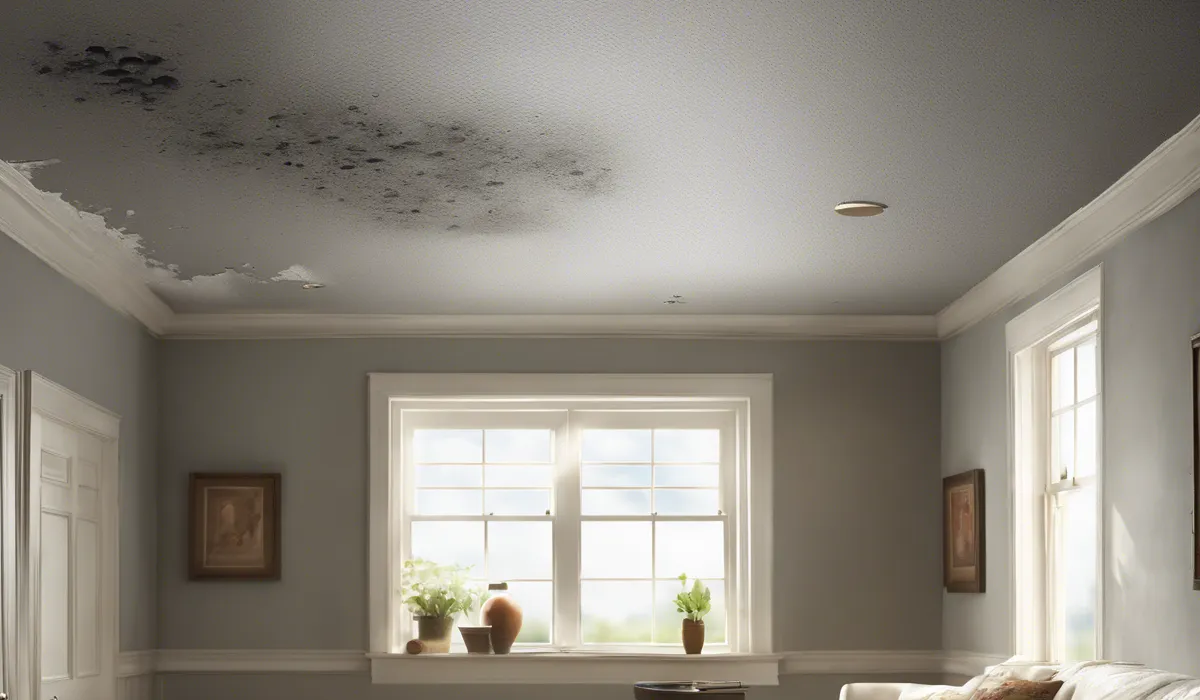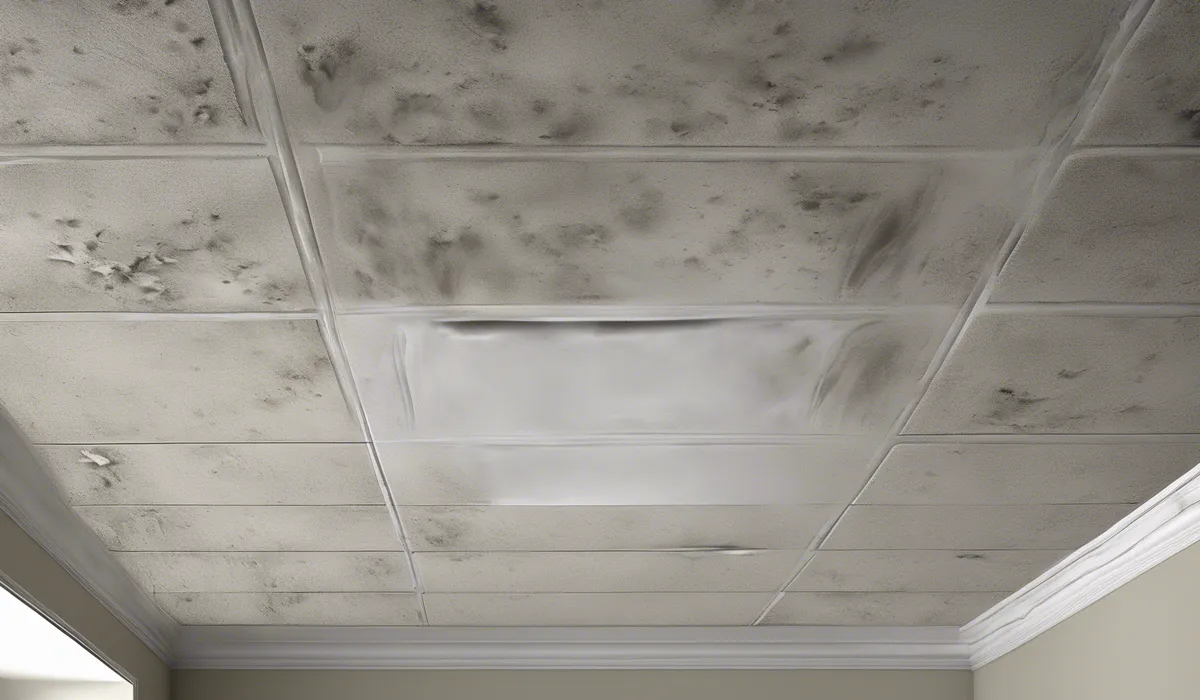Mold on ceilings can be dangerous as it may cause respiratory issues, allergies, and other health problems if not addressed. It’s important to remove mold promptly and fix the underlying moisture issue to prevent its return.
Understanding Mold on the Ceiling

Definition of Mold and How It Grows
Mold is a type of fungus that thrives in moist environments. Tiny spores float in the air, and when they land on damp surfaces, they start to grow.
Molds come in various colors, including black, white, green, or purple. They grow by digesting the material they are growing on, which can be anything from ceiling tiles to wood beams.
Common Types of Mold Found on Ceilings
Several types of mold commonly appear on ceilings. These include Cladosporium, Penicillium, Aspergillus, and the notorious black mold, Stachybotrys chartarum.
Each type has unique characteristics and can grow under different conditions, but all can potentially cause health issues.
Factors Contributing to Mold Growth on Ceilings
Mold on ceilings usually indicates a moisture problem. High humidity, water leaks, and condensation are common culprits.
Poor ventilation in areas like bathrooms and kitchens can also lead to mold growth. It’s vital to control these factors to prevent mold from taking hold.
Signs and Identification of Mold on Ceilings
Signs of mold include visible growths, which can look like spots or streaks, and a musty smell.
Sometimes mold hides behind ceiling tiles or above panels. Water stains, discoloration, and peeling paint are also indicators that there could be mold present.
Health Implications of Ceiling Mold

Potential Health Risks Associated with Mold Exposure
Exposure to mold can lead to respiratory problems, allergic reactions, and other health issues.
Symptoms can range from sneezing, coughing, and throat irritation to more serious conditions like asthma attacks or immune system suppression.
Specific Dangers of Black Mold (Stachybotrys chartarum)
Black mold is particularly dangerous due to its ability to produce mycotoxins that can cause serious health problems.
Long-term exposure to these toxins can lead to neurological issues and can be particularly harmful to young children and the elderly.
Vulnerable Groups
Individuals with allergies, asthma, or compromised immune systems are more susceptible to the effects of mold.
Such individuals may experience more severe reactions and should be particularly cautious of mold exposure.
Symptoms of Mold-Related Health Issues
Common symptoms include headaches, skin irritation, fatigue, and difficulty breathing. If you or someone in your home is experiencing these symptoms and you suspect mold is present, it’s important to address the issue promptly.
Remediation and Prevention Strategies

Steps to Safely Remove Mold from Ceilings
To remove mold, you must wear protective gear, contain the area, and use the right cleaning agents.
It’s crucial to not only clean the mold but also to dry the area thoroughly to prevent it from returning.
Professional Mold Remediation Versus DIY Approaches
While small mold problems can sometimes be handled on your own, larger infestations should be treated by professionals.
They have the tools and expertise to safely and effectively remove mold from your home.
Long-Term Prevention Techniques
Preventing mold involves controlling moisture in your home. Use dehumidifiers, ensure proper ventilation, and fix any leaks promptly. Keeping your home dry is the best way to keep mold at bay.
When to Consult a Professional for Mold Assessment and Removal?
If you’re unsure about the extent of a mold problem or how to address it, consulting a professional is the safest choice.
They can assess the situation and recommend the best course of action to ensure your home is safe and healthy.
FAQs About Mold On Ceiling Danger
Is mold on the ceiling harmful to my health?
Yes, mold on the ceiling can be harmful as it may cause respiratory issues, allergies, and other health problems.
What should I do if I find mold on my ceiling?
If you find mold on your ceiling, you should remove it promptly and address the underlying moisture source to prevent it from returning.
Can mold on the ceiling spread to other areas of my home?
Yes, mold can spread from the ceiling to other areas if the spores become airborne and find suitable conditions elsewhere in your home.
Is it safe to live in a house with ceiling mold?
Living in a house with ceiling mold is not advisable, as it can pose health risks, especially for those with allergies or compromised immune systems.
How can I prevent mold from growing on my ceiling?
To prevent mold growth on your ceiling, fix any leaks or moisture issues promptly and ensure your home has adequate ventilation.
Final Thoughts
Mold growth on ceilings poses significant health risks, including respiratory issues and allergic reactions.
It is crucial to eliminate mold swiftly to mitigate these dangers. Equally important is addressing the underlying moisture problem that facilitates mold growth, ensuring a long-term solution and safeguarding against future health concerns.
